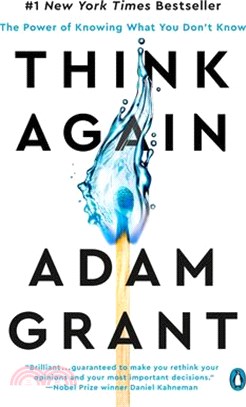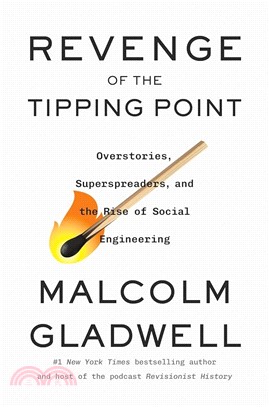站在費曼先生的肩膀學好物理(國際英文版)
商品資訊
系列名:科學新知
ISBN13:9781625034984
出版社:漢世紀數位文化EHGBooks
作者:盧遂顯
出版日:2019/03/01
裝訂/頁數:平裝/228頁
規格:28cm*21cm*1cm (高/寬/厚)
定價
:NT$ 900 元優惠價
:79 折 711 元
無庫存,下單後進貨(採購期約4~10個工作天)
下單可得紅利積點:21 點
商品簡介
作者簡介
目次
相關商品
商品簡介
在20世紀60年代,偉大的物理教授理查‧費曼在加州理工學院以全新的方式教授大一,大二的物理課程 。
現在,離費曼教大一,大二物理已經五十年。是提出一種全新的物理教學方式的時候了。費曼說:“我們寧願先先教完整的物理定律,......與不跟歷史發展相同”。我們遵循他所說,先教最完整的物理定律:量子場論,然後再教經典力學,我們教量子場論是任何大一年級科學與工程本科生都能懂的方式,用最少的數學。
正如費曼在他的講座中多次說物理不是數學。應該用最少的數學來教授最重要的關鍵物理學。數學僅在絕對必要時使用。
量子場理論用最小數學,簡單地表示為七個量子框架,我們將其表示為QF1,QF2,QF3,QF4,QF5,QF6和QF7。或者簡而言之,1,2,3,4,5,6,7。
第一個物質的基本屬性是概率(QF1),第二個基本屬性是量子二元性(QF2)。有三種,也只有三種方法可以影響物質的運動(QF3)。物質可用四個宏觀變數(QF4)和五個基本變數(QF5)來描述。物質有六個對稱(QF6),和一些行動原則S(QF7)
在第一部分中,我們使用這個量子框架來制定經典物理學。在第二部分中,我們使用這個量子框架來討論我們的日常活動,因為我們的日常活動也遵守量子物理的定律。
Richard Feynman gave his two years undergraduate physics in Caltech in a completely new way from the traditional undergraduate physics course in early nineteen sixties.
Now it is fifty years after Feynman gave his famous Lecture on Physics. It is time to present a completely new way of teaching physics. Feynman said, “We prefer to take first the complete laws…… opposite to the historical approach”. We follow what he said, and present complete laws of physics: quantum field theory right from the beginning in a way that any first year undergraduate in science and engineering can follow.
As Feynman said many times in his lectures physics is not mathematics. The most important crucial physics should be taught with minimum mathematics. Mathematics are used only when it is absolutely necessary.
The quantum field theory is presented with minimum mathematics simply as seven frameworks, which we denote as QF1, QF2, QF3, QF4, QF5, QF6, and QF7. Or in short,1,2,3,4,5,6, 7,
The most fundamental property of matter is probability (QF1), and the second fundamental property is quantum duality (QF2) . There are three and only three ways to influence the motion of matter (QF3). Four macroscopic variables (QF4), and five fundamental variables (QF 5) are used describe matter. There are six Symmetries (QF6) and finally the action principle S (QF7)
In part I, we use this quantum framework to formulate classical physics. In part II we use this quantum framework to explain our daily activity, as our daily activity is also governed by quantum physics.
現在,離費曼教大一,大二物理已經五十年。是提出一種全新的物理教學方式的時候了。費曼說:“我們寧願先先教完整的物理定律,......與不跟歷史發展相同”。我們遵循他所說,先教最完整的物理定律:量子場論,然後再教經典力學,我們教量子場論是任何大一年級科學與工程本科生都能懂的方式,用最少的數學。
正如費曼在他的講座中多次說物理不是數學。應該用最少的數學來教授最重要的關鍵物理學。數學僅在絕對必要時使用。
量子場理論用最小數學,簡單地表示為七個量子框架,我們將其表示為QF1,QF2,QF3,QF4,QF5,QF6和QF7。或者簡而言之,1,2,3,4,5,6,7。
第一個物質的基本屬性是概率(QF1),第二個基本屬性是量子二元性(QF2)。有三種,也只有三種方法可以影響物質的運動(QF3)。物質可用四個宏觀變數(QF4)和五個基本變數(QF5)來描述。物質有六個對稱(QF6),和一些行動原則S(QF7)
在第一部分中,我們使用這個量子框架來制定經典物理學。在第二部分中,我們使用這個量子框架來討論我們的日常活動,因為我們的日常活動也遵守量子物理的定律。
Richard Feynman gave his two years undergraduate physics in Caltech in a completely new way from the traditional undergraduate physics course in early nineteen sixties.
Now it is fifty years after Feynman gave his famous Lecture on Physics. It is time to present a completely new way of teaching physics. Feynman said, “We prefer to take first the complete laws…… opposite to the historical approach”. We follow what he said, and present complete laws of physics: quantum field theory right from the beginning in a way that any first year undergraduate in science and engineering can follow.
As Feynman said many times in his lectures physics is not mathematics. The most important crucial physics should be taught with minimum mathematics. Mathematics are used only when it is absolutely necessary.
The quantum field theory is presented with minimum mathematics simply as seven frameworks, which we denote as QF1, QF2, QF3, QF4, QF5, QF6, and QF7. Or in short,1,2,3,4,5,6, 7,
The most fundamental property of matter is probability (QF1), and the second fundamental property is quantum duality (QF2) . There are three and only three ways to influence the motion of matter (QF3). Four macroscopic variables (QF4), and five fundamental variables (QF 5) are used describe matter. There are six Symmetries (QF6) and finally the action principle S (QF7)
In part I, we use this quantum framework to formulate classical physics. In part II we use this quantum framework to explain our daily activity, as our daily activity is also governed by quantum physics.
作者簡介
盧遂顯,美國芝加哥大學理論粒子物理學博士,加州理工學院前訪問教授,現任中醫教授,定居美國洛杉磯。他在大學教過量子力學,量子場理論,粒子物理,數學物理和廣義相對論,電磁理論,經典力學,熱力學,高級電磁學,統計力學,他是四位元物理博士,和六個物理碩士的導師。
Dr. Shui in Lo is a theoretical particle physics with Ph. D. from University of Chicago, former visiting faculty member of California Institute of Technology and currently Professor of Chinese Medicine. For fourteen years he has taught Quantum Field Theory, Particle Physics, Mathematical Physics, and General Relativity; Quantum Mechanics, Electromagnetic Theory, Classical Mechanics, Thermodynamics, Advanced Quantum Mechanics, Advanced Electricity and Magnetism, Statistical Mechanics. He has supervised four Ph.D. and six M.S. in physics.
Dr. Shui in Lo is a theoretical particle physics with Ph. D. from University of Chicago, former visiting faculty member of California Institute of Technology and currently Professor of Chinese Medicine. For fourteen years he has taught Quantum Field Theory, Particle Physics, Mathematical Physics, and General Relativity; Quantum Mechanics, Electromagnetic Theory, Classical Mechanics, Thermodynamics, Advanced Quantum Mechanics, Advanced Electricity and Magnetism, Statistical Mechanics. He has supervised four Ph.D. and six M.S. in physics.
目次
Table of Contents
Part One: Standing on the shoulder of Richard Feynman to teach Physics better
Preface
Chapter 1. Probability
1.1 Quantum Framework (QF)
1.2 The Experiment – The Small Oscillation of a Pendulum
1.3 The Application – The Grandfather Clock
1.4 Example in Daily Life – A Swing in a Playground
1.5 Probability and Error Analysis
1.6 The Professor
1.7 The Student
1.8 The Manufacturer
#Question and Answers
Chapter 2. Quantum Duality
2.1 Introduction
2.2 Duality and Small Oscillation
2.3 Duality and Quantum Mechanics
2.4 Duality and the Pendulum
2.5 Duality and Energy
#Question and Answers
Chapter 3. Influences
3.1 Introduction
3.2 Physical Boundary
3.3 Bound State
3.4 Exchanges
Chapter 4. Macros
4.1 Ideal Systems
4.2 Measurement of Mass
4.3 Laws of Motion – Correlations of Macroscopic Variables
4.4 Elasticity – One Additional Macroscopic Variable
4.5 Methodology to Discover New Laws – An Inductive Way
Chapter 5. Fundamental Variables
5.1 Number of Components n
5.2 Time Variables
5.3 Space
5.4 Energy
5.5 Momentum
Chapter 6. Symmetry
6.1 Introduction
6.2 Creation-Annihilation Symmetry
6.3 Time Symmetry
6.4 Space Symmetry
6.5 Scale Symmetry
6.6 Exchange Symmetry
6.7 Mixed Symmetries and Others
Chapter 7. Action S
7.1 Phenomenological Action
7.2 Fundamental Action S
Part Two: Quantum Framework for Daily Life
Preface
Chapter 1. House
1.1: Introduction
1.2: Probability
1.3: Quantum Duality
1.4: Influences
1.5: Four Macroscopic Variables
1.6: Five Fundamental Variables
1.7: Symmetries
1.8: Action S
Chapter 2. Cars
2.1: Probabilities
2.2: Quantum Duality
2.3: Influences
2.4 & 2.5: Variables
2.6: Symmetries
2.7: Action S
Chapter 3. Clothes
3.1: Probability
3.2: Quantum Duality
3.3: Influences
3.4 & 3.5: Variables
3.6: Symmetry
3.7: Action S
Chapter 4. Apples
4.1: Probability
4.2: Quantum Duality
4.3: Influences
4.4 & 4.5: Variables
4.6: Symmetry
4.7: Action S
Chapter 5. Quantum Framework – A Practical Universal Tool for Knowledge
5.1: Zooming In
5.2: Zooming Out
5.3: The Universal Practical Tool – Quantum Framework
Part One: Standing on the shoulder of Richard Feynman to teach Physics better
Preface
Chapter 1. Probability
1.1 Quantum Framework (QF)
1.2 The Experiment – The Small Oscillation of a Pendulum
1.3 The Application – The Grandfather Clock
1.4 Example in Daily Life – A Swing in a Playground
1.5 Probability and Error Analysis
1.6 The Professor
1.7 The Student
1.8 The Manufacturer
#Question and Answers
Chapter 2. Quantum Duality
2.1 Introduction
2.2 Duality and Small Oscillation
2.3 Duality and Quantum Mechanics
2.4 Duality and the Pendulum
2.5 Duality and Energy
#Question and Answers
Chapter 3. Influences
3.1 Introduction
3.2 Physical Boundary
3.3 Bound State
3.4 Exchanges
Chapter 4. Macros
4.1 Ideal Systems
4.2 Measurement of Mass
4.3 Laws of Motion – Correlations of Macroscopic Variables
4.4 Elasticity – One Additional Macroscopic Variable
4.5 Methodology to Discover New Laws – An Inductive Way
Chapter 5. Fundamental Variables
5.1 Number of Components n
5.2 Time Variables
5.3 Space
5.4 Energy
5.5 Momentum
Chapter 6. Symmetry
6.1 Introduction
6.2 Creation-Annihilation Symmetry
6.3 Time Symmetry
6.4 Space Symmetry
6.5 Scale Symmetry
6.6 Exchange Symmetry
6.7 Mixed Symmetries and Others
Chapter 7. Action S
7.1 Phenomenological Action
7.2 Fundamental Action S
Part Two: Quantum Framework for Daily Life
Preface
Chapter 1. House
1.1: Introduction
1.2: Probability
1.3: Quantum Duality
1.4: Influences
1.5: Four Macroscopic Variables
1.6: Five Fundamental Variables
1.7: Symmetries
1.8: Action S
Chapter 2. Cars
2.1: Probabilities
2.2: Quantum Duality
2.3: Influences
2.4 & 2.5: Variables
2.6: Symmetries
2.7: Action S
Chapter 3. Clothes
3.1: Probability
3.2: Quantum Duality
3.3: Influences
3.4 & 3.5: Variables
3.6: Symmetry
3.7: Action S
Chapter 4. Apples
4.1: Probability
4.2: Quantum Duality
4.3: Influences
4.4 & 4.5: Variables
4.6: Symmetry
4.7: Action S
Chapter 5. Quantum Framework – A Practical Universal Tool for Knowledge
5.1: Zooming In
5.2: Zooming Out
5.3: The Universal Practical Tool – Quantum Framework
主題書展
更多
主題書展
更多書展今日66折
您曾經瀏覽過的商品
購物須知
為了保護您的權益,「三民網路書店」提供會員七日商品鑑賞期(收到商品為起始日)。
若要辦理退貨,請在商品鑑賞期內寄回,且商品必須是全新狀態與完整包裝(商品、附件、發票、隨貨贈品等)否則恕不接受退貨。





























































![Wicked [Movie Tie-In]:魔法壞女巫電影原著](https://cdnec.sanmin.com.tw/product_images/006/006285284.jpg)






